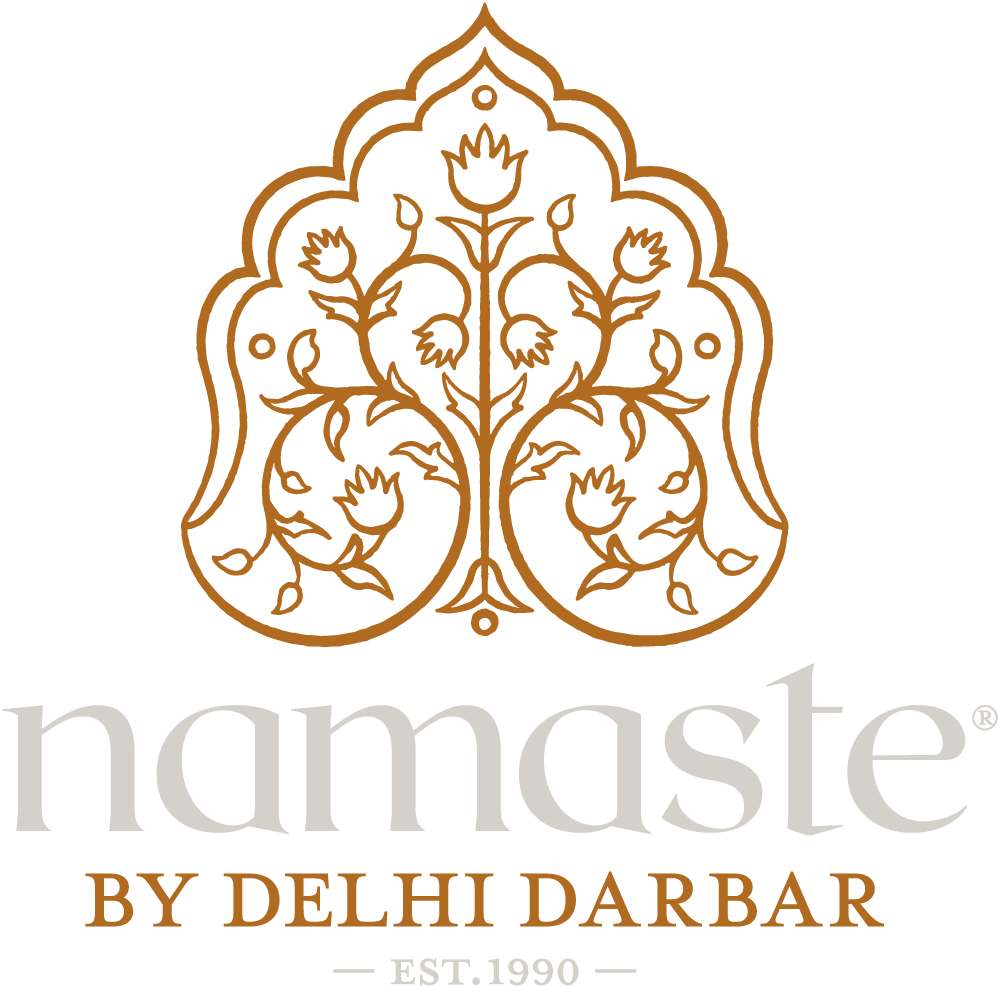The sitar – strings that sing
Walking into Namaste by Delhi Darbar there is no doubt in our mind that you will be moved by your surroundings.
From the cooling touch of marble and the inviting sights of warm brass and jewel-toned cushions to first the smell then taste of the freshest locally sourced ingredients we promise every sense will be invigorated.
Described by our customers as haunting, mesmerising, relaxing and even uplifting, many of India’s greatest sitar players, including the great Ravi Shankar, will also accompany your dining experience, bringing the very sound of India to the west of Scotland.
What does the word sitar mean?
The word sitar comes from the Hindi ‘saat’ and ‘tär’, meaning ‘seven strings’. This, however, can be somewhat misleading as the instrument can have up to twenty-one strings.
What are the sitar’s characteristics?
As part of the chordophone family, which includes the guitar, vibraphone and harp, the sitar’s metal strings run along the wide, hollow neck, or dand, of the instrument while passing over approximately twenty raised, movable frets. Either one or two drone strings help to accentuate the rhythm. The sympathetic strings run below the frets and resonate to create the unmistakable harmonious sound that help set the mood and pace, or raga. Each set of strings has corresponding tuning pegs, called kunti.
Is the sitar a solo instrument?
Although the sitar can be used effectively as a standalone instrument, it can also be successfully accompanied by a:
• tambura – a similar stringed instrument that sustains a melody or provides an accompanying drone
• sarod – a stringed instrument with a deep sounding tone
• sahnai – a reeded instrument
• tabla – a pair of small hand drums
How is the sitar played?
Reaching approximately 1.2 metres in length, the sitar is played in a seated position with the instrument sitting at a 45-degree angle. Its body is nestled between the player’s left foot and right knee, allowing the left fingers to move weightlessly and effortlessly along the neck. The strings are plucked with the right hand using a mizraab – a thick steel or brass plectrum.
What are sitars made of?
Sitars are typically made from two materials.
The neck and faceplate use sheesham (Indian rosewood), Burma teak (a tropical hardwood), or toon, which belongs to the mahogany family. Specialists believe that the very highest quality sitars are made from teak that has been seasoned for generations, with craftsmen often sourcing wood that was used in colonial era villas. Such is the demand and therefor value of this wood, sources remain a closely guarded secret.
Calabash, or bottle gourds, create an incredible resonating chamber for the main body. Bridges can be made of deer horn, ebony or even camel bone.
What is the history of the sitar?
The sitar’s origins date back to medieval times and its invention is credited by experts to one Mughal fakir, Khusrau Khan. Many historians believe Khan was inspired by a traditional Persian lute with the rather similar sounding name of the sehtar (‘seh’ and ‘tar’ meaning ‘three strings’), which were commonly played within the Mughal courts. Instruments from India’s sub-continent, such as the veena, could also have played a key part in the instrument’s development as Indian temple sculptures from the 9th and 10th centuries often feature sitar-like drawings.
Who is India’s most famous sitar player?
The sitar developed and flourished throughout 17th, 18th and 19th century India, undergoing many changes in form to maximise ease of handling and quality of tone. Its popularity boomed in the late 1950’s and early 1960’s, drawing a global audience through the works of Ravi Shankar. As a sitarist and composer, his outstanding talent and unsurpassed technical ability led him to break traditional musical barriers to work with American-born virtuoso violinist Yehudi Menuhin and Beatles guitarist George Harrison.
Are there different types of sitar?
Although the sitar has undergone incredible transformations over the centuries, the larger and longer Ravi Shanker Model (RE Sitar), is used for instrumental music, whereas the Vilayat Khan Model (VK Sitar) is smaller in size and is used for gayaki – the accompanying of a vocalist.
Is the sitar used in western music?
Although traditionally playing a central role in Hindustani music, in the mid- to late 1960’s, psychedelic culture quickly embraced the sitar’s distinctive, melodic, somewhat hypnotic tones. Many of rock’s greatest names, including Robbie Krieger of The Doors, Brian Jones of The Rolling Stones and, of course, George Harrison, were drawn to experiment with, incorporate or even feature the instrument within some of their most iconic tracks. Fellow musicians, including The Kinks, used modern electric guitars that, while mimicking the sounds of the sitar, proved far easier to play.
In conclusion
Although a world away in its origins, the sitar has been embraced by countries and cultures worldwide. With its ability to cross all borders, music that once seemed foreign is now enjoyed and even celebrated.
In the very same way, Namaste brings some of the very best flavours and traditions from India to the very heart of Glasgow, while ensuring that carefully selected local ingredients play an invaluable part in our success.
